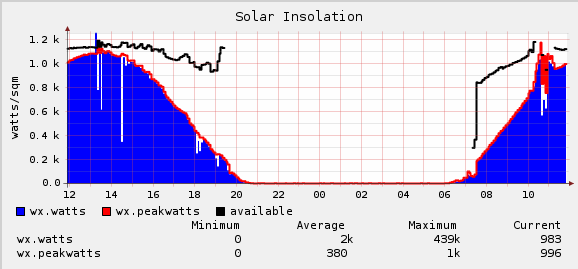On re-reading that, I've missed a couple of words. They make a change mostly to the accuracy of my terms.
The pyro output is usually watts per square metre.
Your panels also produce power, in watts.
However since you will be recording over time, not instantaneous output (I infer that from the use of a logger), then using instantaneous values over a period of time is largely meaningless.
If you monitor every second and accumulate, you get instantaneous-watts, every second, which is close enough for our purposes to being "watt seconds". Add them up and store the values every minute or 5 minutes or whatever, and you get a reasonably accurate "watt seconds" per unit time.
Here's a graph from my own from yesterday and today:

The blue area is the number of watt-seconds in each 5 minute period.
The red line is the PEAK watts during each 5 minute period.
The black line is a calculated estimate of the total incident radiation that would be available to a perfectly aligned array.
To explain some things that are evident.
1. The dips in the blue, where the red appears more-or-less unchanged is from something casting a shaddow. Possibly a bird sitting on the sensor, or a small cloud.
2. Dips in the blue, with an accompanying spike in the red line shows the cloud-edge effect, magnifying the sun causing a higher "peak" power, but then the shaddow causing a reduced total watt-seconds in the interval.
3. The black line is complex. My pyranometer is a cosine-corrected instrument. It takes into account the angle of the sun.
Some of my arrays track the sun, so I want to know how much "should" be available to them. This black line is calculated backwards from the power measured and corrected, and the calculated position of the sun.
Tip for you, chris - when you install your weather station sensor, install it close to your solar panels, and most critically - install it facing exactly the same way. That will NOT be the way they tell you to install it, which will be perfectly level. If you want to use it for this purpose, you want to know the sun relative to the panels, not relative to the ground.